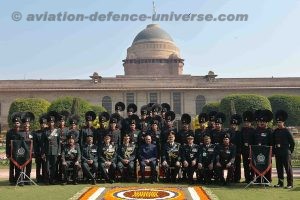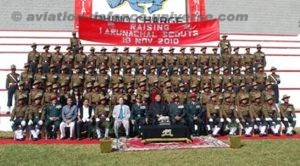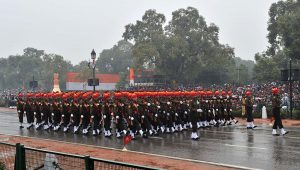
New Delhi. 25 November 2020. The JAT Regiment celebrated its 225 years of distinguished and illustrious service to the nation recently. The Jat Regiment is part of the infantry of the Indian Army, of which it is one of the longest-serving and most-decorated regiments.
The regiment has won 19 battle honours between 1839 and 1947, and post-independence it has won five battle honours, eight Mahavir Chakra, eight Kirti Chakra, 32 Shaurya Chakras, 39 Vir Chakras and 170 Sena Medals. During its 200-year service history, the regiment has participated in various actions and operations in India and abroad, including the First and the Second World Wars. Numerous battalions of the Jat Regiment, including the 14th Murray’s Jat Lancers, fought in the First World War.
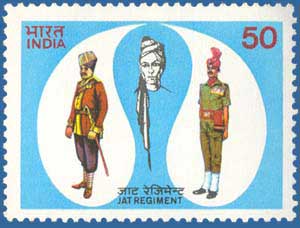
The Regiment claims its origins from the Calcutta Native Militia that was raised in 1795, which later became an infantry battalion of the Bengal Army. The 14th Murray’s Jat Lancers was formed in 1857. After 1860, there was a substantial increase in the recruitment of Jats into the British Indian Army. The Class Regiment, The Jats, was initially created in 1897 as infantry units from old battalions of the Bengal Army. In January 1922, at the time of the grouping of the Class Regiments of the Indian Army, the 9th Jat Regiment was formed by merging four active battalions and one training battalion into a single regiment.
The 1st Battalion was raised as the 22nd Bengal Native Infantry in 1803. The 2nd and 3rd Battalions were raised in 1817 and 1823 respectively. All three battalions had distinguished records of service, including the winning of many honours during World War I. The 1st Battalion served with great distinction in France and Iraq (then Mesopotamia) and was conferred the signal honour of being declared “Royal” in addition to being made Light Infantry.
The Regiment saw a great deal of fighting in North Africa, Ethiopia, Burma, Malaya, Singapore, and Java-Sumatra. A large number of gallantry awards including a Victoria Cross and two George Crosses were won. At the end of the war, the Regiment removed the numeral 9 from its title and became the Jat Regiment.
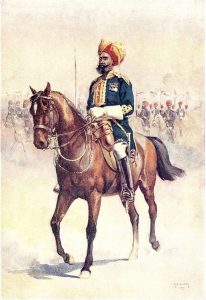
Following Indian independence from the UK in 1947, the Jat Regiment served in Indo-Pakistani War of 1947–1948, the 1962 Sino-Indian War, the conflicts with Pakistan in 1965 and 1971, and in Sri Lanka and Siachen. In 1965, 3 Jat under Lt Col (now Brig Retd) Desmond Hayde on 1 September and then again on 21–22 September, crossed the Ichhogil Canal and captured Dograi right up to Batapore-Attocke Awan, advancing towards Lahore. In the 1999 Kargil War, five of the regiment’s battalions took part. The regiment has also contributed battalions to UN missions in Korea and Congo. It was also involved in counter-insurgency operations that have kept the Indian Army busy ever since independence.
Currently the regiment has 23 regular battalions, 4 Rastriya Rifles battalions and 2 reserve battalions. The battle cry, adopted in 1955, in Hindi is Jāt Balwān, Jai Bhagwān meaning Jat is Powerful, Victory Be to God!
Lt Gen SK Saini, PVSM, AVSM, YSM, VSM, ADC, VCOAS & Colonel of the JAT Regiment graced the occasion as the Chief Guest. The events started with a Wreath Laying Ceremony at JAT War Memorial followed by a spectacular Regimental Parade and JORA Meet with veterans of the Regiment.
Due to the COVID 19 pandemic, the event was conducted at a reduced scale adhering to all precautions.


































